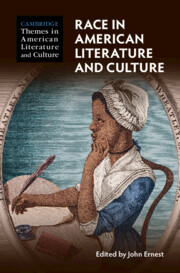Book contents
- Race in American Literature and Culture
- Cambridge Themes in American Literature and Culture
- Race in American Literature and Culture
- Copyright page
- Contents
- Contributors
- Acknowledgments
- Introduction
- Part I Fractured Foundations
- Part II Racial Citizenship
- Part III Contending Forces
- Part IV Reconfigurations
- Part V Envisioning Race
- Part VI Case Studies
- Part VII Reflections and Prospects
- Chapter 24 What Is Missing?
- Chapter 25 Traditions, Communities, Literature
- Chapter 26 Children of the Future
- Chapter 27 Presidential Race
- Index
Chapter 26 - Children of the Future
from Part VII - Reflections and Prospects
Published online by Cambridge University Press: 26 May 2022
- Race in American Literature and Culture
- Cambridge Themes in American Literature and Culture
- Race in American Literature and Culture
- Copyright page
- Contents
- Contributors
- Acknowledgments
- Introduction
- Part I Fractured Foundations
- Part II Racial Citizenship
- Part III Contending Forces
- Part IV Reconfigurations
- Part V Envisioning Race
- Part VI Case Studies
- Part VII Reflections and Prospects
- Chapter 24 What Is Missing?
- Chapter 25 Traditions, Communities, Literature
- Chapter 26 Children of the Future
- Chapter 27 Presidential Race
- Index
Summary
This chapter explores the critical consensus that children are always figures of the future anchored to cisgendered heterosexual reproduction, as proposed by critics like Rebekah Sheldon, Lee Edelman, Lauren Berlant, and Robin Bernstein. Against this view of the child, this chapter foregrounds the experiences of children in the U.S. educational system and in racially differentiated ways that don’t necessarily spare white children from a high disregard for their welfare. What it finds is that the “sacralization of the Child,” as Edelman put it, is a thin discursive tissue that distracts from pervasive negligence and racial anxiety. It concludes with a meditation on Ezra Pound’s famous imagist poem “In the Station of the Metro,” which the critic Josephine Park has identified as an important figure in Asian American literature because of the ways in which it popularized a highly orientalized idea of Chinese and Japanese culture. What is the view from the crowd the poem conjures, which is racially diverse and getting more so? What kind of claim on childhood does this crowd make?
- Type
- Chapter
- Information
- Race in American Literature and Culture , pp. 419 - 427Publisher: Cambridge University PressPrint publication year: 2022

